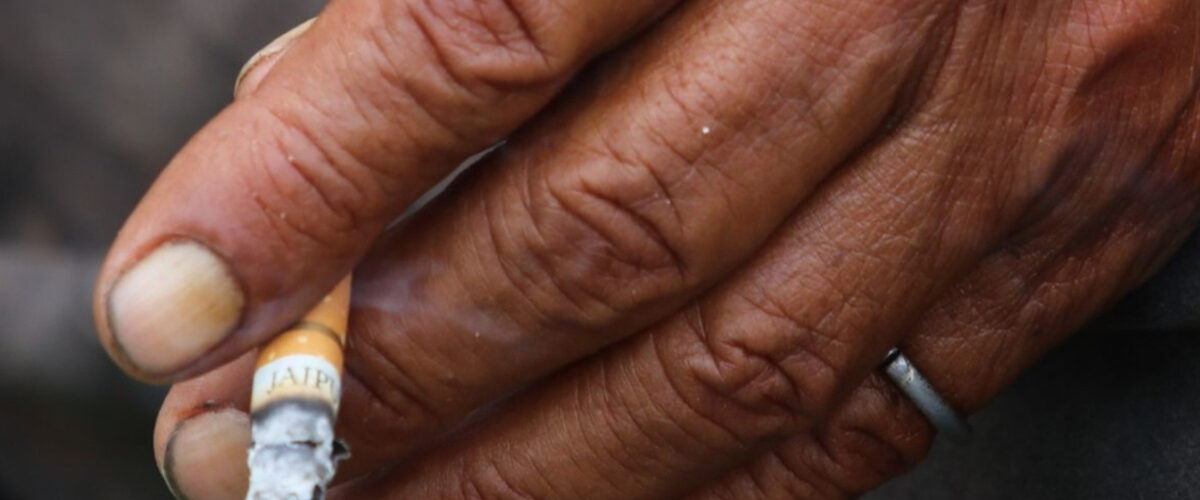The Smoker dies 10 years earlier than those who never smoked.
The compulsive smoker must know that he has a mortality rate twice as high as those who have never smoked.
According to research, it is said that cigarettes begin to cause harm within minutes of being consumed and not as it was thought to do after years.
When cigarette smoke enters the lungs, it passes into the bloodstream and quickly reaches the brain, so that nicotine reaches its maximum level within 10 seconds of inhalation.
For this reason, two hours after smoking, the body will have eliminated about half of the nicotine. Therefore, the immediate effects of nicotine wear off quickly.
The smoke that the smoker releases into the environment from a tobacco cigarette is more harmful to health than that inhaled by the smoker himself, since it releases toxic and carcinogenic substances such as cyanide, ammonia and carbon monoxide into the air.
A person is considered addicted to cigarettes when they smoke more than 20 times a day, if they smoke after half an hour of waking up, or if they have to stop their daily activity to smoke, then the person is considered to have a fairly strong addiction to cigarettes. .
All of this is due to nicotine, which is the main addictive drug in cigarettes, and is what makes it so difficult to quit smoking.
Smokers are classified as:
- Light smoker: consumes less than 5 cigarettes a day.
- Moderate smoker: smokes an average of 6 to 15 cigarettes a day.
- Heavy smoker: smokes more than 16 or more cigarettes per day on average.
The consequences of long-term cigarette consumption produce increased blood pressure, increased heart rate, hyperglycemia, and increased bowel movement.
It causes platelets in your blood to clump together easily, making your blood cells stickier and more likely to form clots and cause a heart attack.
On the other hand, nicotine also activates the brain’s reward circuits, which regulate the reinforcement of behavior and the sensation of pleasure.
Cancer symptoms from smoking:
- Cigarette use causes many types of cancer, such as: lung cancer, larynx, mouth, esophagus, throat, bladder, kidney, liver, stomach, pancreas, colon, rectum, cervix or cervix, and myeloid leukemia acute.
- A thickening or lump anywhere on the body.
- Weight gain or loss without known cause.
- A sore that does not heal.
- Hoarseness or cough that does not go away.
- Difficulty to swallow.
- Discomfort after eating.
- Changes in intestinal and urinary habits.
- Unusual bleeding or discharge.
Recommendations to quit smoking:
- There are studies that confirm that the probability of success is greater when done radically.
- Delays desire.
- Chew something.
- Do not smoke.
- Exercise regularly, drink green tea and eat anti-inflammatory foods.
- Try relaxation techniques.
- Call for reinforcements.
- Try nicotine replacement therapy.
- Avoid triggers.
- Medication to quit smoking varenicline.
When you decide to quit smoking, you will observe the following changes:
- It takes 1 to 9 months to clear the lungs after quitting smoking.
- After quitting smoking, your skin can change in several ways. It becomes more hydrated, which can reduce the appearance of wrinkles and fine lines. In addition, it acquires a better texture and a more uniform tone.
- Reduces the risk of getting sick and dying from a stroke, and that risk is close to that of people who never smoked. It reduces the risk of developing an abdominal aortic aneurysm, and that risk continues to reduce over time.
- In most people, the desire to smoke stops being a problem after 3 or 4 weeks, gradually decreasing until it disappears in the following weeks and months.
- After 48 hours: the normalization of smell and taste begins. After 72 hours: there is improvement in shortness of breath and better functioning of the bronchi.
- Two days after quitting smoking, you can begin to enjoy the flavors and smells that you lost during your smoking period.
Consequently, high cigarette consumption increases the risk of premature death from numerous diseases that result from cigarette consumption by 70%.
FONT
https://www.cdc.gov/tobacco/campaign/tips/spanish/enfermedades/tabaquismo-cancer.html
OTHER ARTICLES OF INTEREST
Mesogastrium joins the stomach to the abdominal wall








